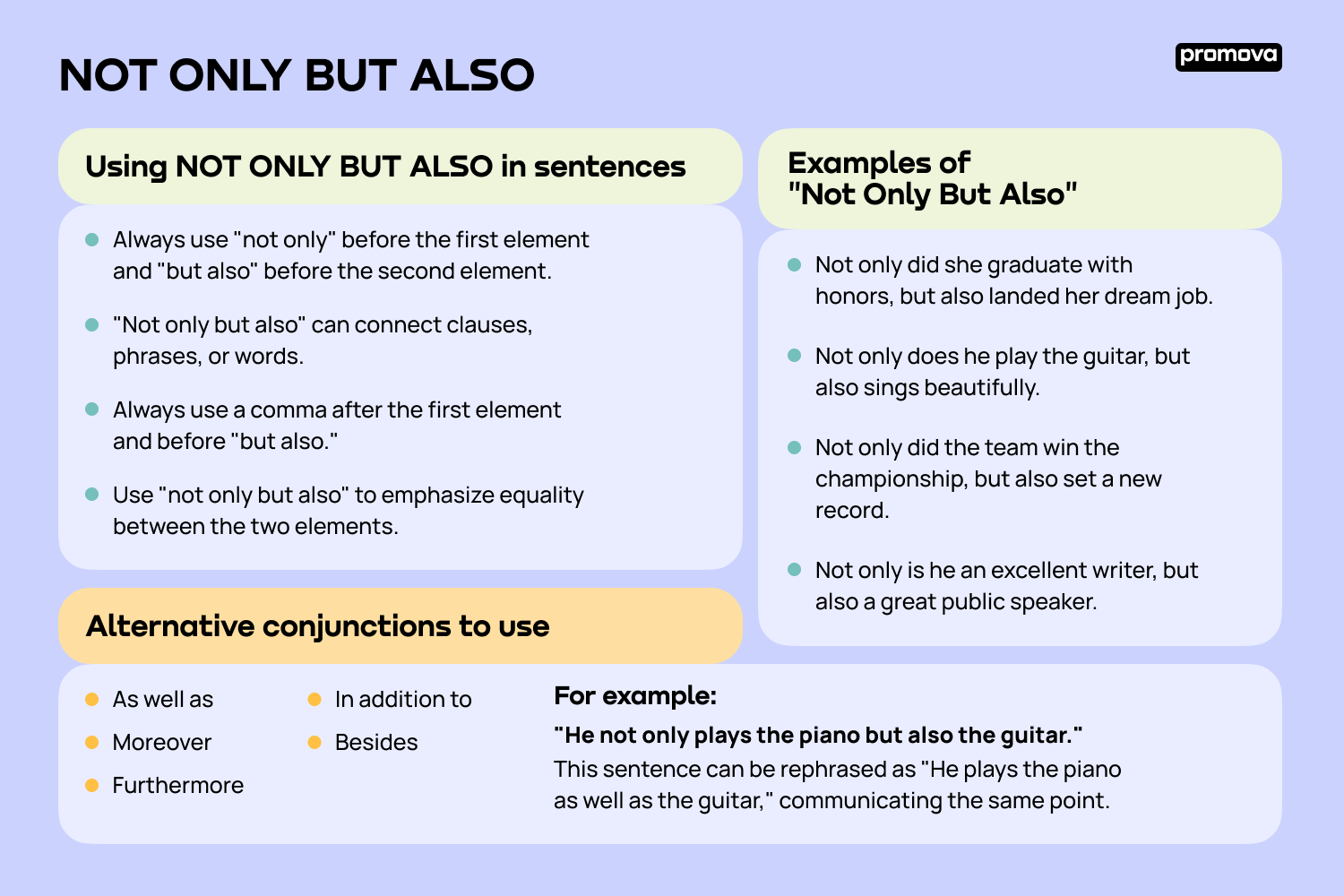NOT ONLY BUT ALSO
Contents
"Not only but also" is a handy conjunction that can help enrich your speech and improve your English. In this reference, we'll explore its meaning and provide lots of handy examples!
The meaning of NOT ONLY BUT ALSO
"Not only... but also" is a complex conjunction that joins two clauses or phrases, emphasizing that the second element is equally important as the first one. It is often used to add an additional piece of information that complements the first element.
For example: "Not only did he win the race, but also broke the record." In this sentence, the conjunction "not only but also" emphasizes that the person won the race and broke the record, highlighting the significance of both events.

Using NOT ONLY BUT ALSO in sentences
The conjunction must always be used in pairs and placed in the correct position within the sentence.
Tips on how to use "not only but also" effectively:
- Always use "not only" before the first element and "but also" before the second element.
- "Not only but also" can connect clauses, phrases, or words.
- Always use a comma after the first element and before "but also."
- Use "not only but also" to emphasize equality between the two elements.
Here's an example of a sentence using "not only but also":
"Not only do you need to study hard, but also apply what you've learned." In this sentence, the conjunction emphasizes that studying hard and applying what you've learned are equally important.
Examples of "Not Only But Also"
To further understand how to use "not only but also" in sentences, here are some examples:
- Not only did she graduate with honors, but also landed her dream job.
- Not only does he play the guitar, but also sings beautifully.
- Not only did the team win the championship, but also set a new record.
- Not only is he an excellent writer, but also a great public speaker.
These examples demonstrate how "not only but also" can be used to emphasize the importance of two elements in a sentence.
NOT ONLY BUT ALSO Grammar
Using "not only but also" in sentences requires proper grammar. The conjunction follows specific rules, and any deviation from these rules can lead to confusion or ambiguity in the sentence.
Here are some grammar rules to keep in mind when using "not only but also":
- Always use "not only" before the first element.
- Use a comma after the first element and before "but also."
- Always use "but also" before the second element.
- Use the same verb tense for both elements.
For example: "Not only did he enjoy the movie, but also recommends it to his friends." In this sentence, both elements use the past tense, making the sentence grammatically correct.
3
Alternative conjunctions to use
While "not only but also" is a useful conjunction, it can be repetitive if used repeatedly in a text. Here are some alternative conjunctions that can be used instead of "not only but also":
- As well as
- Moreover
- Furthermore
- In addition to
- Besides
For example: "He not only plays the piano but also the guitar." This sentence can be rephrased as "He plays the piano as well as the guitar," communicating the same point.
Summary
"Not only but also" is a powerful conjunction that emphasizes the importance of two elements in a sentence. Using it correctly requires proper grammar and following specific rules. Misusing it can lead to confusion or ambiguity in the sentence. However, there are alternative conjunctions that can be used instead of "not only but also" to avoid repetition.
Make sure to check out more handy references below - best of luck on your learning journey!
Comments